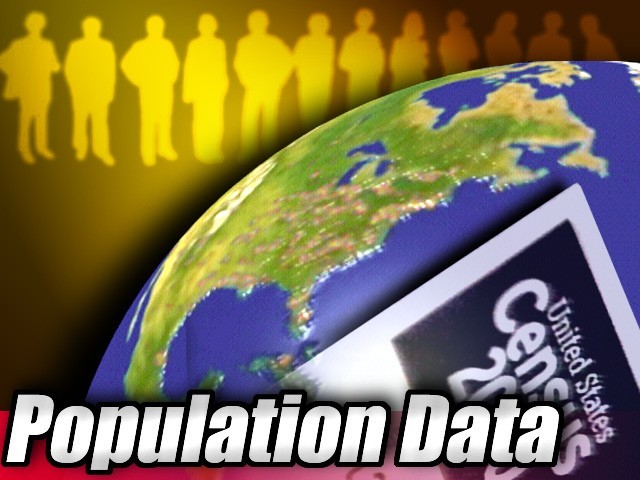Gwinnett is one of seven new counties in the country where that is now the case. (See below.)
New Census Bureau estimates released Thursday show Forsyth County leading the way with a 77 percent increase in population since 2000; the smallest increase in population was in Stephens County, only one percent. The figures are as of July 2009 and show that the state as a whole has grown 21 percent.
Only one county in the region showed a decline in population, Elbert, where the drop was .7 percent.
The Census Bureau estimates that Banks County recorded a population increase of 16.5 percent (estimated population: 16,700); Barrow County, 56.4 percent (72,158); Dawson, 40.9 percent (22,555); Elbert, -0.7 percent (20,372); Fannin, 15.9 percent (22,945); Forsyth, 77.4 percent (174,520); Franklin, 7.2 (21,748); Gilmer, 23.7 (29,021); Gwinnett 37.3 (808,167); Habersham 21.5 (43,613); and, Hall, 34.8 (187,743).
Also, Hart, a 4.6 percent increase in population (24,067); Jackson, 52.8 percent (63,544); Lumpkin, 31.2 (27,528); Pickens, 36 percent (31,264); Rabun, 10.4 (16,611); Stephens, 1.0 percent (25,700); Towns, 18.1 percent (11,010); Union, 22.9 (21,252); and White, 26.8 (25,294).
MINORITY GROWTH CONTINUES
The nation's minority population is steadily rising and now makes up 35 percent of the United States, advancing an unmistakable trend that could render them the new American majority by midcentury.
New Census estimates for 2009 show minorities added 2.5 percent, or 107.2 million people, boosted by a surge in Hispanic births and more people who described themselves as multiracial. During this time, the white population remained flat, making up roughly 199.9 million, or 65 percent, of the country.
In 2000, whites comprised 79 percent of the total population and minorities 21 percent.
Currently four states Hawaii, New Mexico, California and Texas as well as the District of Columbia have minority populations that exceeded 50 percent. About 316 of the 3,143 counties one in 10 have minority populations of 50 percent or greater. That's up from more than 250 counties in 2000.
And it's one state more from 2000, when Texas had not yet become a minority state. The 35 percent overall minority proportion of the population was up from 34 per cent a year ago.
The new Census estimates released Thursday documented a widening age and race divide. They also are the last government numbers before completion of the 2010 census later this year, which could change the balance of political power when legislative districts are redrawn based on population and racial diversity.
Locally, the changing race dynamics were even more widespread.
Seven U.S. counties last year saw their minority populations become the majority: Gwinnett County, Ga.; Titus and Victoria counties in Texas; Finney County, Kan.; Saguache County, Colo.; Contra Costa County, Calif.; and Yakima County, Wash.
The overall rise in the minority population is due to recent sharp increases in minority births, especially among Hispanics, who made up more than half of the total population gains last year. There are now roughly 9 births for every 1 death among the Latino population, compared to a roughly one-to-one ratio for whites.
As a result, even with immigration of Hispanics now slowing, U.S. minorities make up 49 percent of the children born in the U.S., up one percentage point from 2008. Based on current rates, data from the 2010 census could show a new ``tipping point'' in which babies born to minorities outnumber that of babies born to whites.
Multiracial Americans, the fastest growing U.S. demographic group, are also adding to minority gains. About 5.3 million last year were identified as being of multiple race or ethnicity, up 3.2 percent from the previous year.
Among the individual races, Hispanics grew by 3.1 percent to 48.4 million and Asians increased 2.5 percent to 13.7 million. They now represent about 15.8 percent and 4.5 percent of the U.S. population, respectively.
Blacks, who make up about 12.3 percent of the population, increased less than 1 percent last year to 37.7 million.
``Most parts of the country are now totally dependent on minorities for achieving growth in their young adult and child populations,'' said William H. Frey, a demographer at the Brookings Institution, citing the low birth rates among whites as well as the aging white baby boomer population.
``Minorities are especially important for current and future labor force gains in all but the most rapidly growing parts of the country,'' he said.
Other findings:
The median age for Hispanics and Asians edged lower to 27.4 and 35.3 respectively compared to 36.8 for the total population. The median age for blacks was unchanged at 31.3, while whites rose slightly to 41.2, due mostly to an aging boomer population.
Utah had the youngest residents, with 1 in 10 people who were younger than five. Florida was the oldest, with nearly 1 in 5 residents who were 65 or older.
Charlotte County, Fla., was the nation's ``oldest'' county, with 34 percent of its population age 65 or older, due to retirees seeking warm winters, golf courses and the county's lower costs. It was followed by La Paz County, Ariz.; Highlands County, Fla., and Lancaster County, Va.
The 2009 Census estimates used local records of births and deaths, tax records of people moving within the U.S., and government statistics on immigrants. The figures for ``white'' refer to those whites who are not of Hispanic ethnicity.
Results from the official 2010 head count will be published beginning in late December.

http://accesswdun.com/article/2010/6/229975
